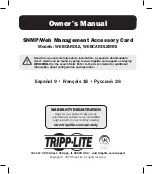
3Com Switch 8800 Configuration Guide
Chapter 35 MPLS Architecture
35-4
In independent control mode, each LSR can send label mapping messages to the
LSRs it connects to at anytime.
In ordered control mode, a LSR can send label mapping messages to upstream only
when it receives a specific label mapping messages of the next hop of a FEC or the
LSR serves as LSP (Label Switching Path) egress node.
Note:
Currently, the Switch 8800 adopts the ordered label control mode.
5) Label
retention
mode
There are two label-retention modes: liberal label retention mode and conservative
label retention mode.
Suppose there are two LSRs: Ru and Rd. For a specific FEC, if LSR Ru has received
the label binding from LSR Rd, in case Rd is not the next hop of Ru and Ru saves this
binding, then it is the liberal label retention. And if Ru discards this binding, then it is the
conservative label retention mode.
In case it is required that LSR is capable of adapting route variation rapidly, you can use
the liberal label retention mode. In case it is required that a few labels are saved in LSR,
you can use the conservative label retention mode.
Note:
Currently, the Switch 8800 adopts the liberal label retention mode.
35.2.3 LDP
Label distribution protocol (LDP) is the signaling control protocol in MPLS, which
controls binding labels and FECs between LSRs and coordinates a series of
procedures between LSRs.
35.3 MPLS Architecture
35.3.1 MPLS Network Structure
The basic composing unit of MPLS network is LSR (Label Switching Router). It runs
MPLS control protocol and L3 routing protocol, exchanges routing messages with other
LSRs and create the routing table, maps FECs with IP packet headers, binds FECs
















































